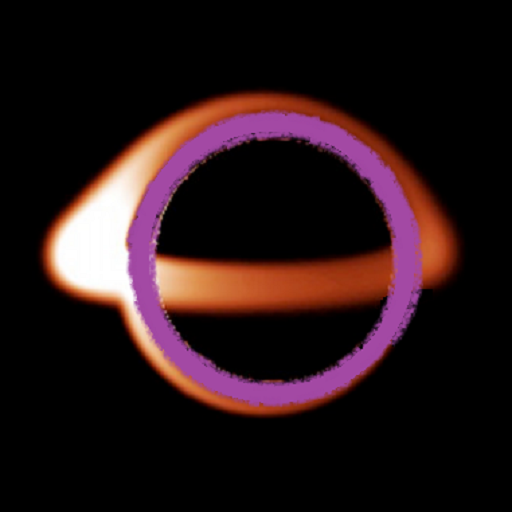Here’s an age-old dilemma – one that originates back in the dark ages. Are we in the center of the universe? It was once thought that Earth was the center of the universe and the solar system – the Sun, the moon, and the stars were believed to revolve around Earth. Nicholas Copernicus was the first to postulate that Earth revolves around the Sun in 1514. Johannes Kepler and Galileo Galilei began building public support, and Galileo observed this with the newly invented telescope. The landscape of the solar system was forever changed. But are we out of the dark ages yet? Since the recent discovery of Dark Energy at the turn of the last century, we are still left with the belief that our galaxy is the center of the universe. I am shocked that this belief still persists today.
In the early 1900s, expansion of the universe was first postulated. William de Sitter in 1917 used Einstein’s cosmological constant to show that the universe is expanding. In 1922, Alexander Friedman also predicted expansion and postulated the famous assumption that the universe looks the same from any vantage point, no matter where you are in the universe. Georges Lemaître proposed the theory of the expanding universe in 1925 and followed up with his proposal of the Big Bang Theory in 1927, just two years prior to Hubble’s discovery that expansion was occurring. By 1929, the Big Bang and expansion changed how we perceive our universe.
In 1998, two independent teams (Riess et al. and Perlmutter et al.) discovered that the universal expansion was accelerating. With this synchronicity, Dark Energy was born and resurrected Einstein’s cosmological constant once again. The landscape of cosmology was forever changed. But with this revelation came an important optical illusion that is not yet understood. The illusion is this – we are still n the center of the universe. But if Friedman’s assumption is correct, it would look like this regardless of our location. So why do we believe we are actually in the center?
Enter the Omniverse proposal in 2013. My book has the information the world needs to know! There is a simple explanation for Dark Energy, and it involves expansion along a curved surface. Regardless of where we are on the curved surface, it still appears to the observer that we are in the middle. And a recent study supports my finding (http://prd.aps.org/abstract/PRD/v88/i10/e103502) that we aren’t the actual center of the universe. What does this mean? It means that everything we know about the universe is about to change – again! Like Einstein’s finding that gravity warps space-time downward, I propose that regional large-scale upwarping causes expansion as a consequence of the laws of physics.
We have abandoned the flat-Earth model with the planet in the center of the universe, only to adopt a model of our galaxy in the center of the universe. If we sailed to the edge of the world, we could literally fall off the edge into space. Likewise, if we travel to the edge of the universe, we literally accelerate out of existence. Really? It’s the flat-Earth theory applied to the universe. With my upcoming book, Grand Slam Theory of the Omniverse, I show how the edges of the universe are an illusion formed by the expansion along the curved surface that the holographic universe is projected from. And studies are being published that help support my model already! Join the new revolution – the Independence Age of discovery. This is only the beginning of the new understanding that will change the landscape of cosmology once again.
Look for news on the upcoming book release this holiday season and upcoming book-signing events and presentations – I will back my claims with real science and I will change how we perceive our surroundings. Follow on Facebook at www.facebook.com/GrandSlamTheory and bookmark GrandSlamTheory.com, where you can download the FREE white paper.
– Everything we know about our universe is about to change.
Alexander Friedmann in 1922 predicted that the universe is expanding. Friedman postulated assumptions stating that the universe looks identical in any direction, and this would be true from any point within the universe.
Normal
0
false
false
false
EN-US
X-NONE
X-NONE
/* Style Definitions */
table.MsoNormalTable
{mso-style-name:”Table Normal”;
mso-tstyle-rowband-size:0;
mso-tstyle-colband-size:0;
mso-style-noshow:yes;
mso-style-priority:99;
mso-style-qformat:yes;
mso-style-parent:””;
mso-padding-alt:0in 5.4pt 0in 5.4pt;
mso-para-margin:0in;
mso-para-margin-bottom:.0001pt;
mso-pagination:widow-orphan;
font-size:11.0pt;
font-family:”Calibri”,”sans-serif”;
mso-ascii-font-family:Calibri;
mso-ascii-theme-font:minor-latin;
mso-fareast-font-family:”Times New Roman”;
mso-fareast-theme-font:minor-fareast;
mso-hansi-font-family:Calibri;
mso-hansi-theme-font:minor-latin;
mso-bidi-font-family:”Times New Roman”;
mso-bidi-theme-font:minor-bidi;}



